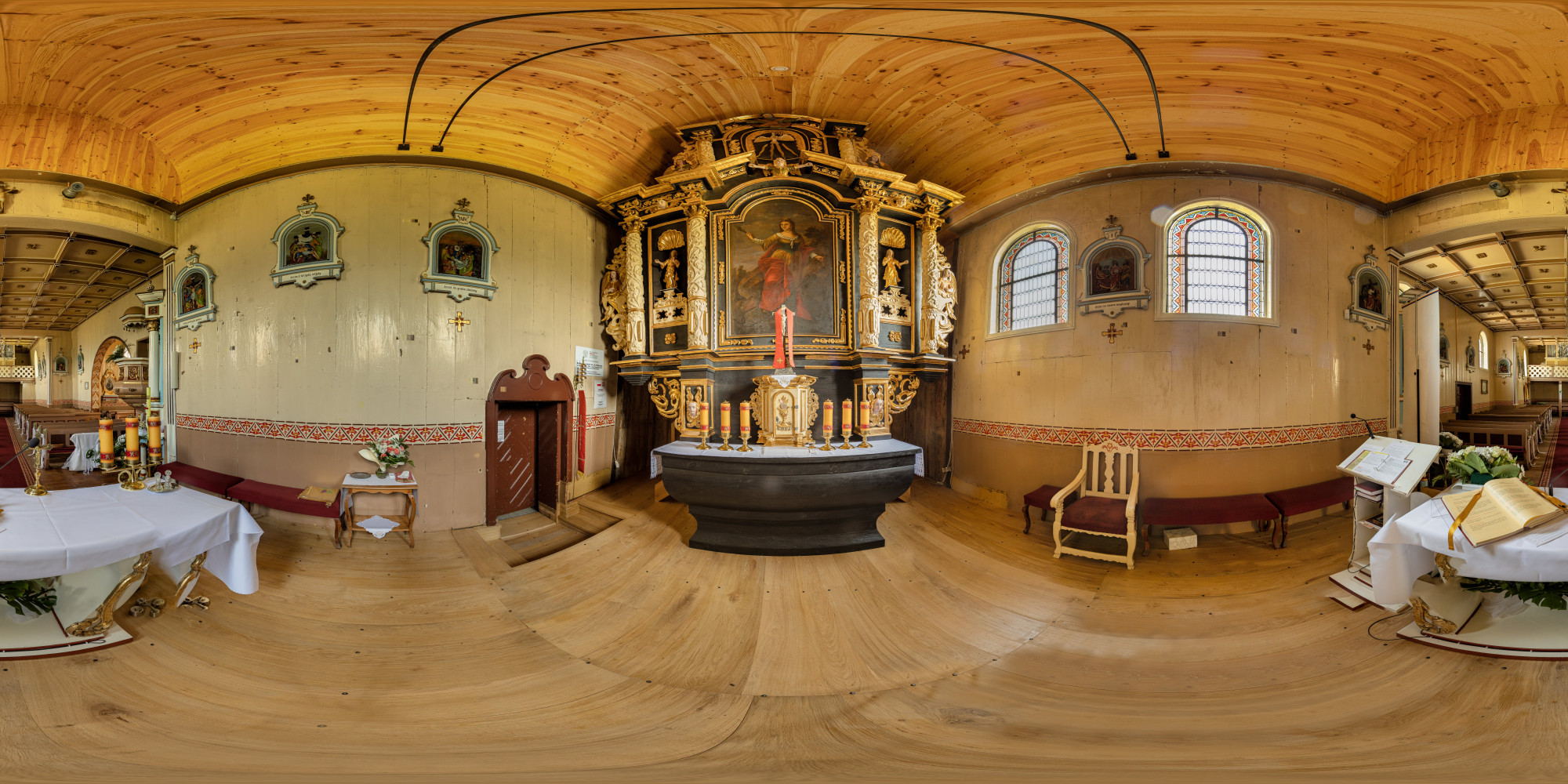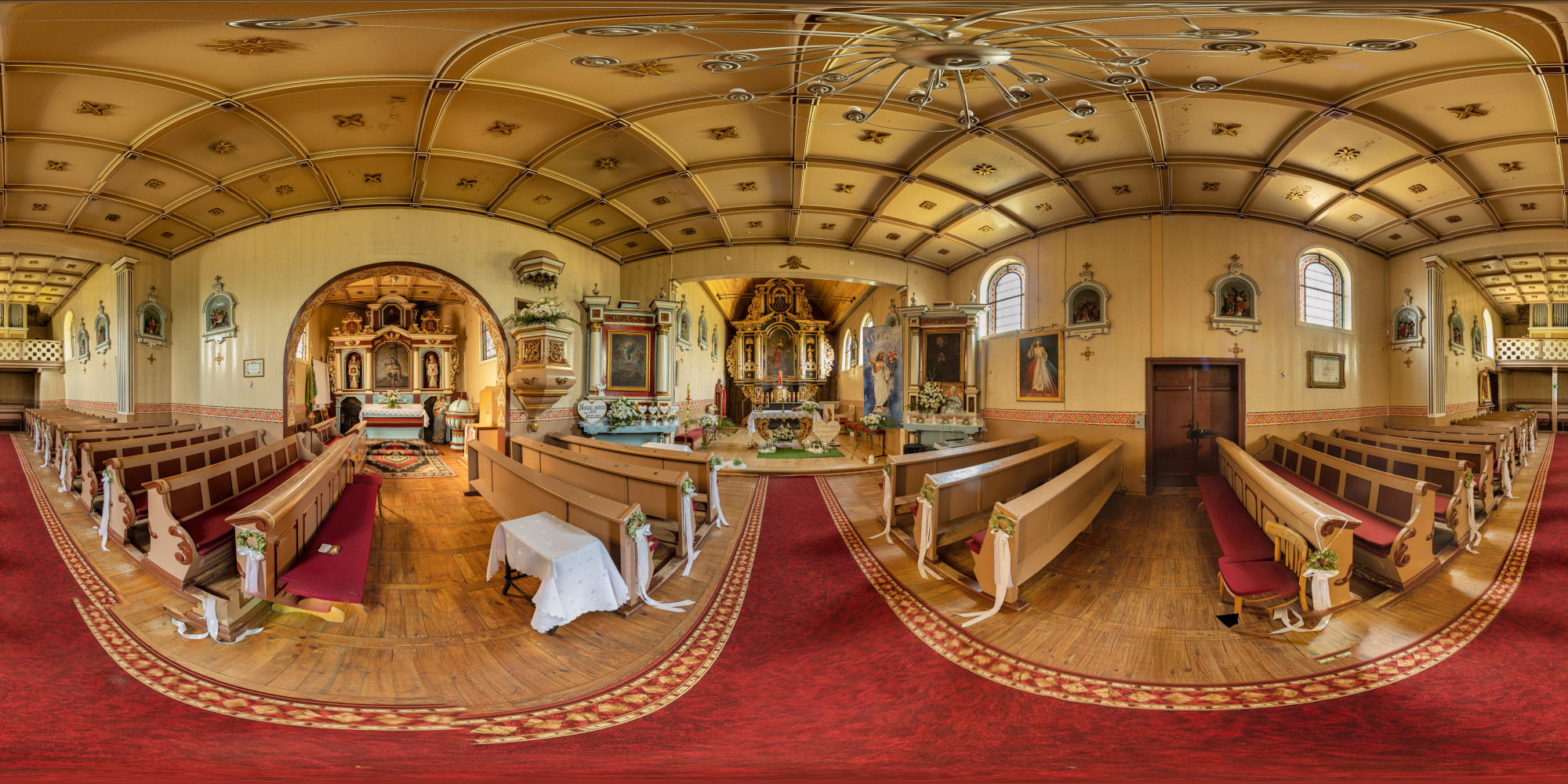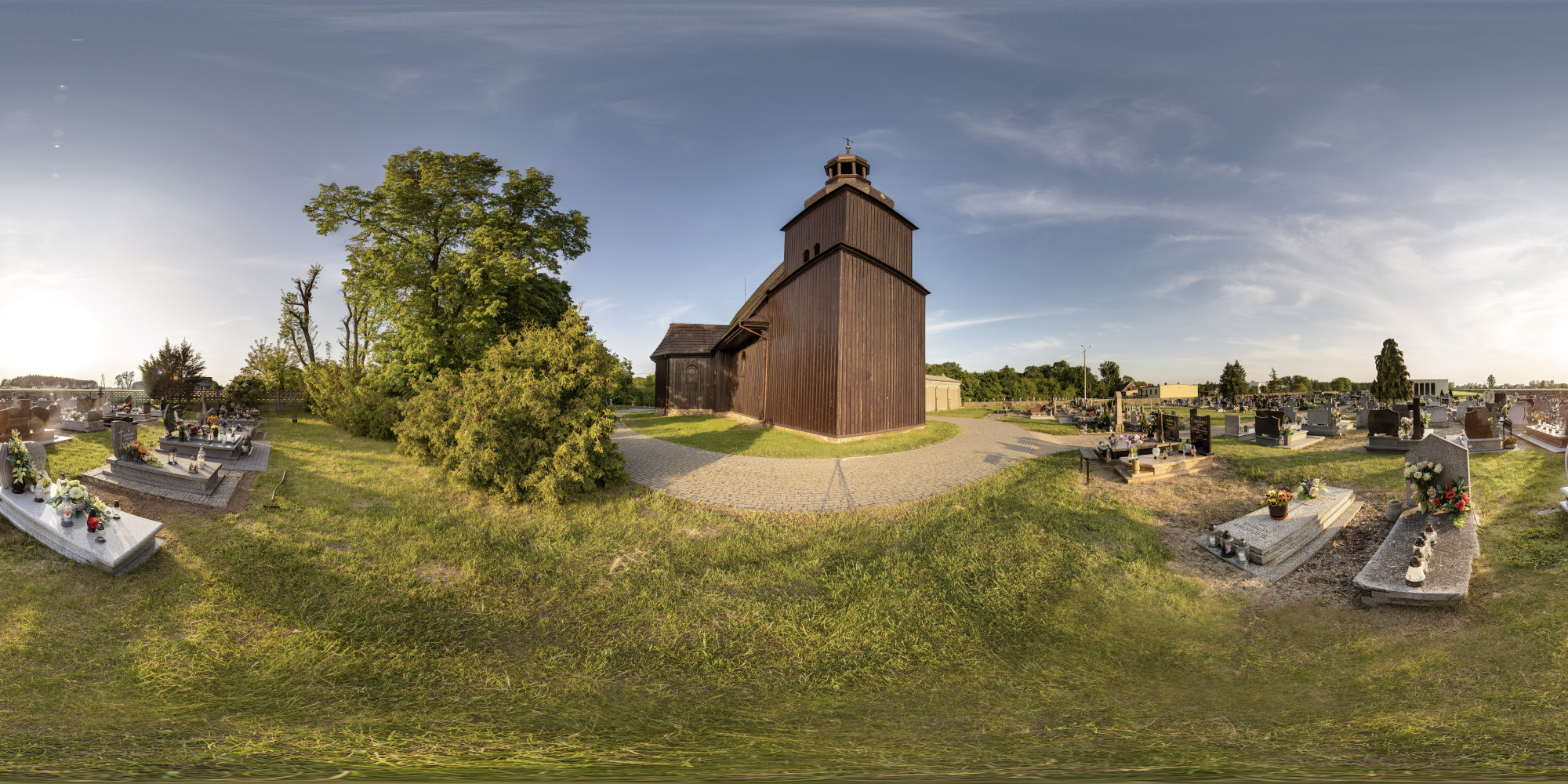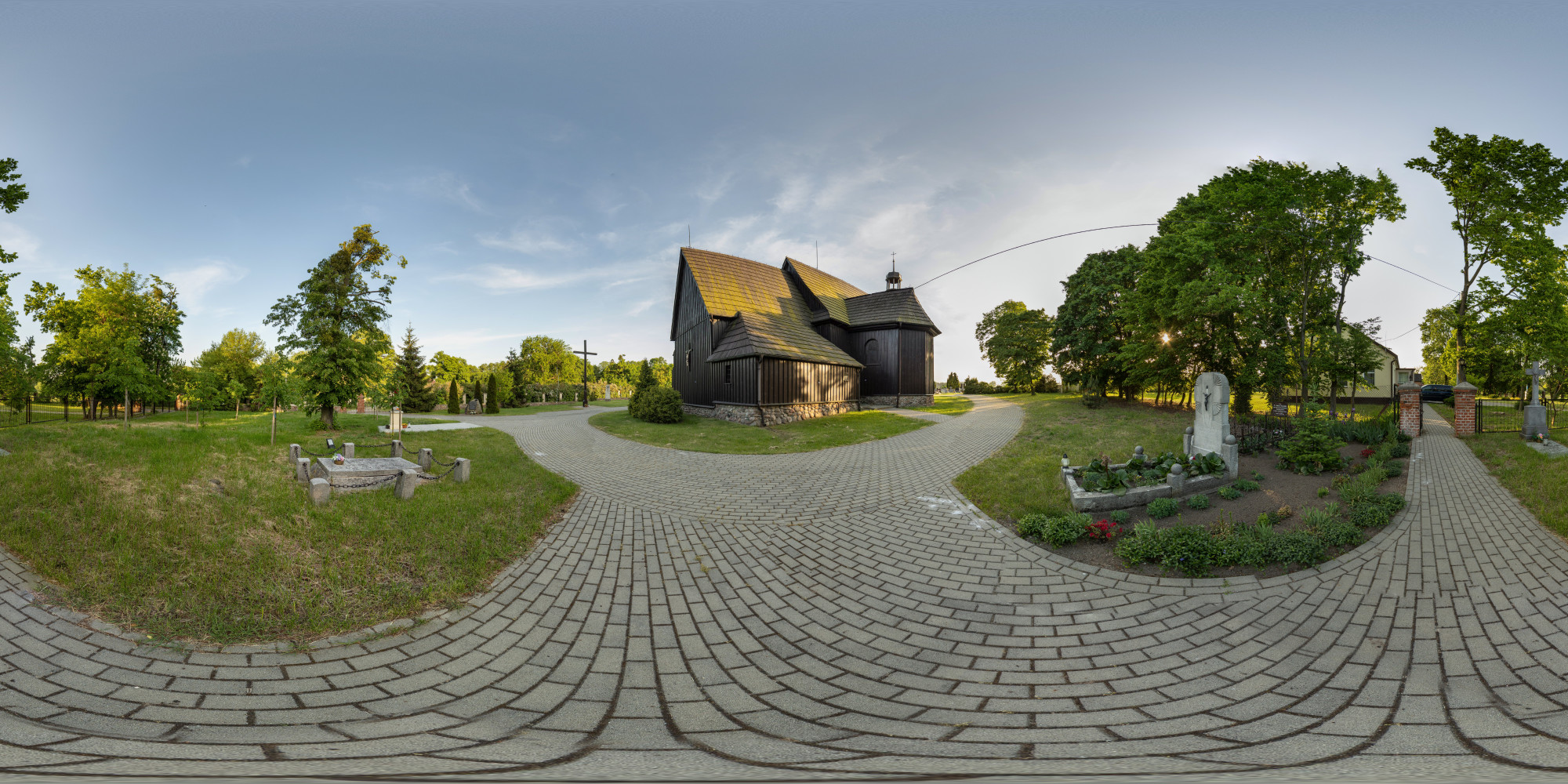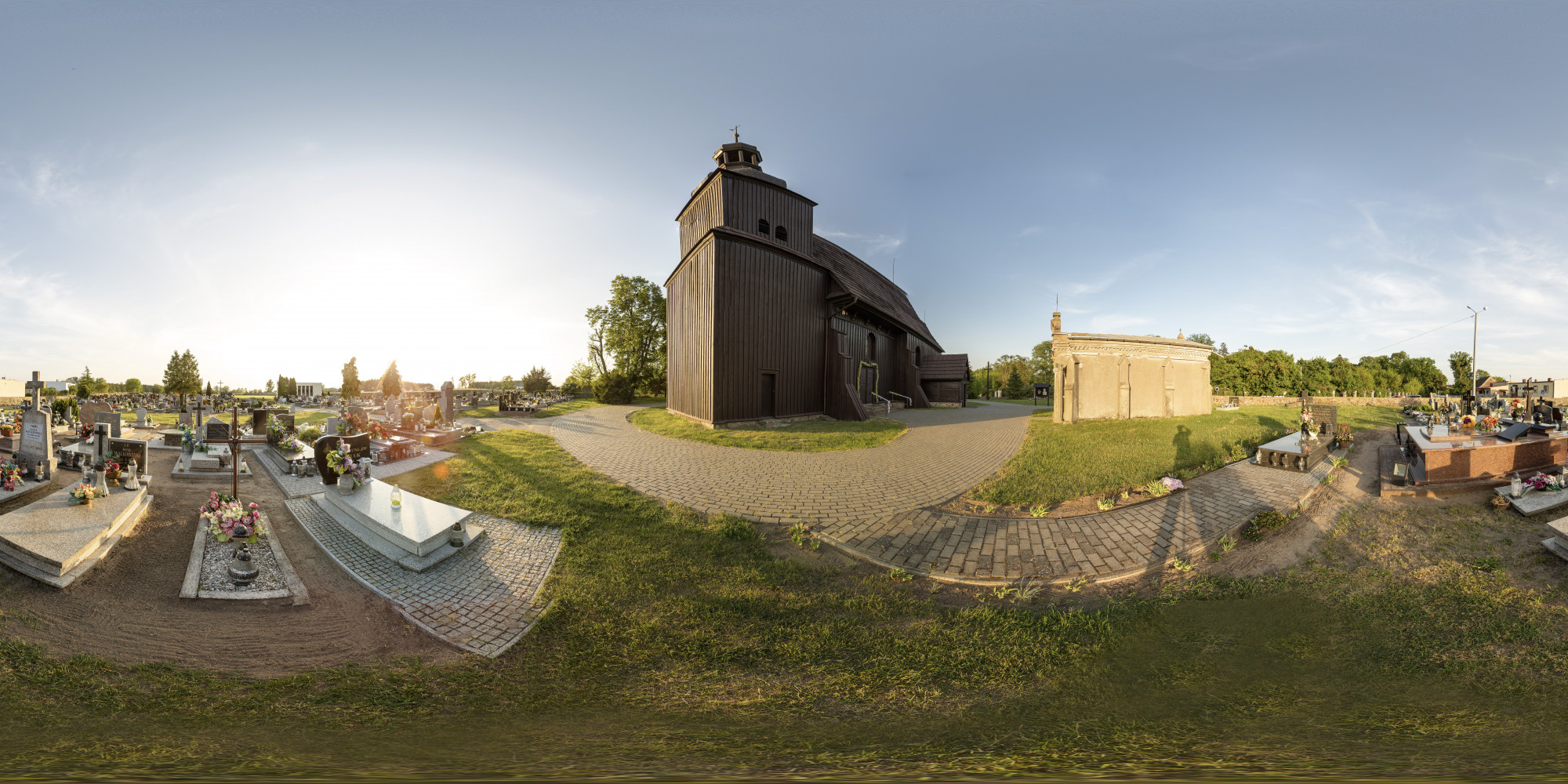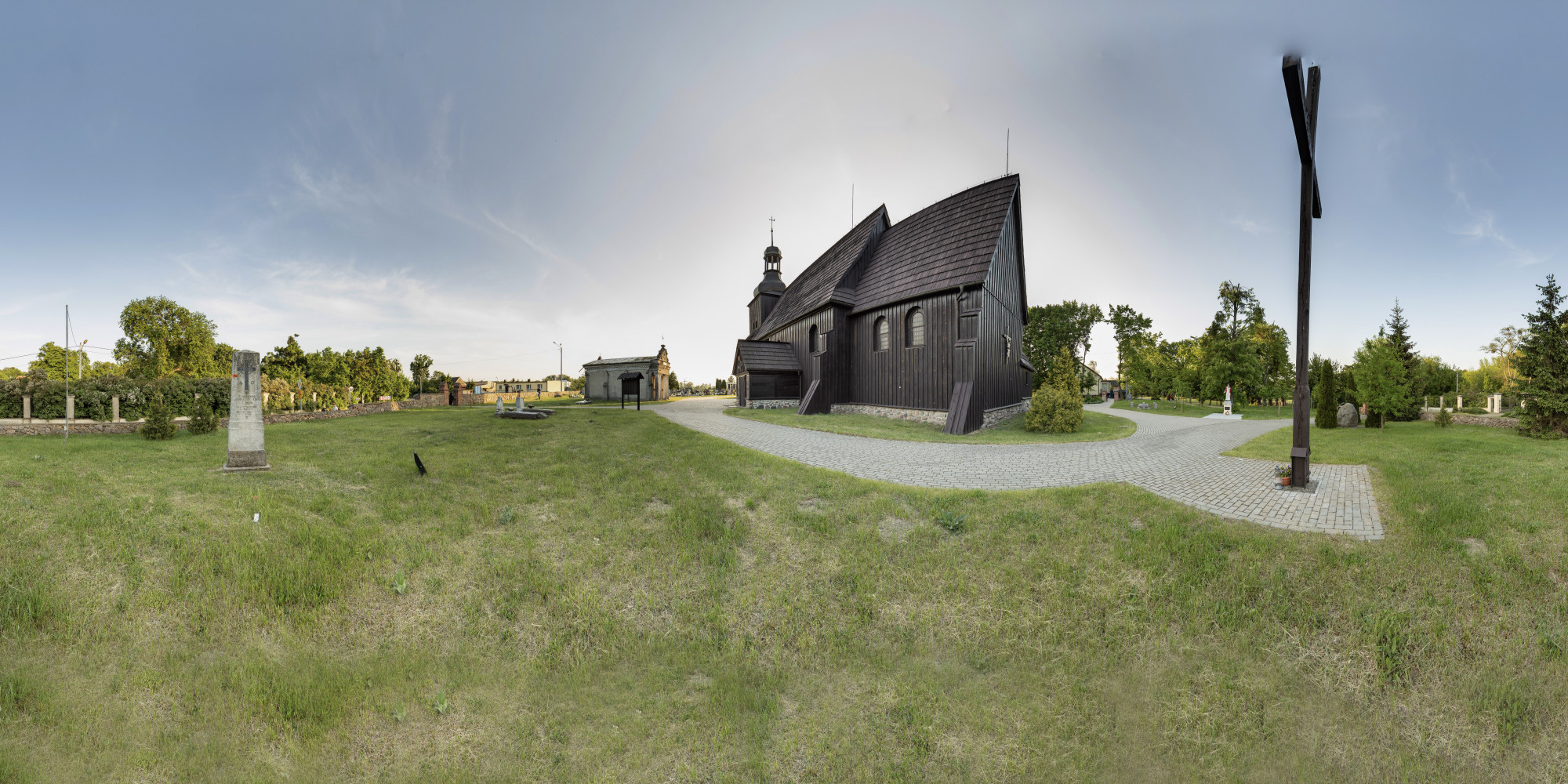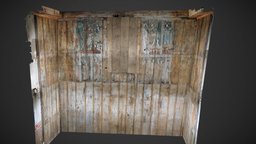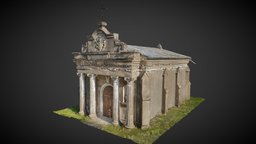St Margaret Parish Church Complex - Zabytek.pl
St Margaret Parish Church Complex
The church, having a wooden log structure, is reinforced with wooden buttresses on the outside, which is untypical of this type of buildings. The church graveyard contains the tomb-mausoleum of the Hulewicz family, the owners of the Kościanki estate, dating from 1892, and the grave of Bohdan Hulewicz, one of the leaders of the Greater Poland Uprising of 1918-1919.
History
The village is located approx. 8 km to the south-west of Słupca, by a local road connecting Strzałkowo and Gozdów. It was mentioned in written records for the first time in the 14th century. It was owned by members of the nobility. A local parish was established in c. 1337. The wooden church was built in the 2nd half of the 16th century. In c. 1649, the Chapel of St Isidore the Farmer, founded by Krzysztof Marszewski, was built onto the north wall of the nave. In the years 1759-1766, the nave was enlarged and a tower was added. The building was renovated in 1852 and 1937. In 1968, the wood shingles covering the roof were replaced with eternit. The church underwent full-scale renovations in the years 2005-2008, when new wood shingles were installed, among other things. The tomb-mausoleum of the Hulewicz family, who owned the Kościanki estate, was built in 1892.
Description
The Church Complex of St Margaret in Graboszewo is located in the centre of the village, on the west side of the road. It comprises a church, the mausoleum of the Hulewicz family, and a graveyard. The whole complex is enclosed with a brick and cobblestone wall, with metal gates and wicket gates installed on brick posts.
The church has a wooden log structure. The walls, resting on a stone wall base, are covered with weatherboards and reinforced with buttresses on the outside. It is oriented towards the east. It has one nave (with no aisles). The chancel is smaller than the nave and terminates in a flat wall. It is adjoined by a sacristy. The nave is adjoined by the Chapel of St Isidore, having a lower roof and terminating in a semi-hexagon, and a porch. In the front, by the nave, there is a square two-storeyed tower having a post-and-frame structure, topped with a sheet metal, Baroque roof with a lantern. The church is covered with a two-ridge roof with wood shingles. The nave and the chapel have flat ceilings and the chancel is covered with a false barrel vault. The music gallery is enclosed with a straight parapet. The interior fittings are particularly noteworthy. They include an Early-Baroque main altar from the 1st half of the 17th century with a Rococo painting of St Margaret from the 18th century and a chapel altar incorporating a painting of St Isidore from the 1st half of the 17th century and sculptures of angels holding symbols of the Passion of Jesus. There are also two Baroque side altars from the late 17th century. The pulpit, the wooden baptismal font, and the crucifix are all in the Baroque style and date from the 2nd half of the 17th century. There is also another baptismal font, made of stone and Gothic in character, from 1522. Elements deserving particular attention are a founder’s pew from 1588, decorated with plant motifs and coats of arms, and a Renaissance epitaph slab of the Młodziejewski family, with a crucifix and the kneeling family of the founder, Wilibrord Młodziejewski, and his two wives, made in 1584.
The mausoleum of the Hulewicz family, having an eclectic façade, is situated in the church graveyard. It dates from the late 19th century. Built on a rectangular floor plan, one-storeyed, and reinforced with buttresses, it has three-bay façades. Next to the church is the grave of Bohdan Hulewicz (1888-1968), one of the leaders of the Greater Poland Uprising.
The church may be visited from the outside. Holy Masses: Sunday: 8.30, 11.00; weekdays: in summer: 18.30, in winter: 17.00; holy days suppressed of obligation or transferred to another day: 9.00, 17.00.
compiled by Beata Marzęta, Regional Branch of the National Heritage Board of Poland in Poznan, 23-11-2015.
Bibliography
- Drewniane kościoły Wielkopolski, Poznań 2004, s. 81
- Katalog Zabytków Sztuki w Polsce, t. V: Województwo poznańskie, z. 22: Powiat słupecki, oprac. T. Ruszczyńska, A. Sławska, Warszawa 1960, s. 5-6
- Kościoły w Wielkopolsce XVI wieku : (Blizanów, Domachowo, Graboszewo, Kłodawa, Koźmin, Nowa Wieś Królewska, Ołobok, Rzgów, Wierzenica) / oprac. Mateusz Pawlaczyk; Wrocław 1985.
- Maluśkiewicz P., Województwo konińskie, Warszawa-Poznań 1983, s. 157-158
- Maluśkiewicz P., Ziemia konińska. Przewodnik turystyczny, Konin 2002, s. 82-83
Category: church
Architectural style: Folk style
Building material:
wood
Protection: Register of monuments, Monuments records
Inspire id: PL.1.9.ZIPOZ.NID_N_30_BK.167021, PL.1.9.ZIPOZ.NID_E_30_BK.93116
